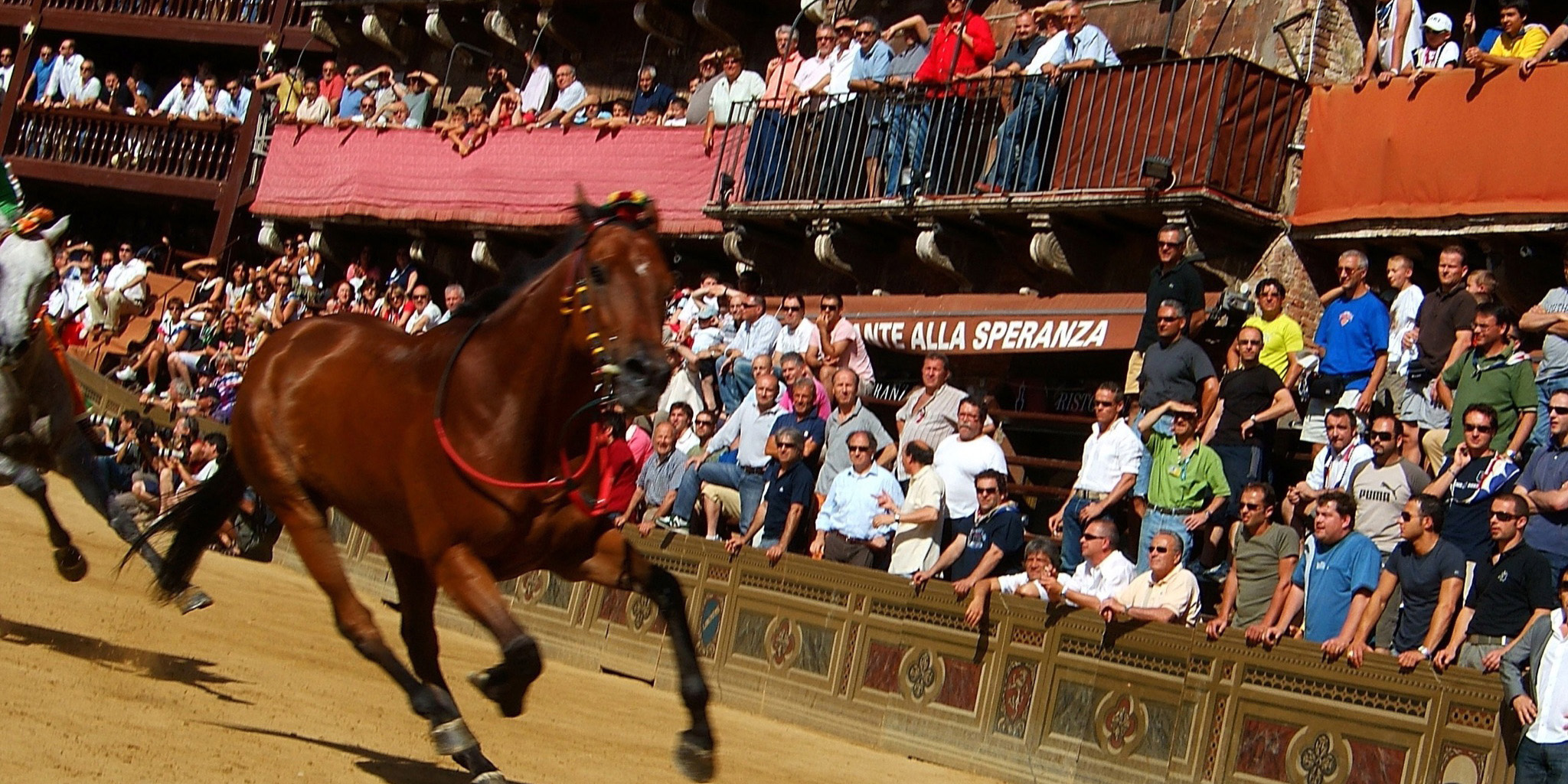It’s the middle of May, and you’re being awakened by snare drums pounding outside your window. Tut . . . Rut tut tut . . . Rut tut tut tut tut.
No, a war is not about to start. It’s just the practice sessions of the young drummers, dressed in the colors of their districts (and no, it’s not The Hunger Games), trying to bring them honor.
A couple of weeks later, during the drawing of the remaining districts that will compete in the first race of the summer, you watch the Piazza del Campo (Siena’s town square) fill with people. With their district’s colors wrapped around their shoulders, the spectators watch, wait, and hope for their flag to appear outside the window where the drawing takes place.
A trumpet sounds and a flag emerges. The square erupts and several men wearing the same colors start climbing the walls of the tower. They climb towards the flag that symbolizes the celebration of the honor their district hopes to receive in the race.
These are common scenes in the city of Siena, an ancient city in the middle of Tuscany, Italy. The drummers, the climbers, and thousands like them throughout the town are preparing for the momentous race that occurs twice every summer.

In Siena, the horse race called Il Palio takes place every year on July 2 and again on August 16. Ten of the 17 contrade (districts) compete, and the winner gains the high honor of being Palio champion.
Siena’s entire year revolves around these races. Young drummers prepare and practice their rhythms, flag bearers rehearse all around the city, and the leaders of each contrada barter throughout the year to get the best jockeys and, more importantly, the best horses.
On the day of the race, thousands of people gather in the piazza. The clock strikes seven and—BOOM—they’re off! The bareback riders race around the square amid the cheers of spectators. As they round the final turn, the crowd’s cries fill the square. When the racers cross the finish line, people jump over the fences tosurround the winning horse.
The 17 districts are age-old geographical separations of the city that were originally used for military purposes. But now they act as the heart and soul of the community. Fellow members of a district are fiercely loyal to one another, and they work together to keep their area of the city and its residents safe.
The passion and patriotism that the Sienese feel for their districts is palpable in all of the events that lead up to Il Palio, which, in reality, lasts only about 75 seconds. Before, during, and after the race, the contrade are truly the lifeblood of the city of Siena and the race. They make Siena unique, and they bring people of all ages together.

Interesting Facts about Il Palio
- The jockeys ride bareback and frequently fall off their horses during the race.
- It is possible for a horse to win the race without its rider.
- The jockeys’ whips are made from dried bull hide.
- The contrada that has gone the longest without winning a Palio is nicknamed the nonna(grandmother). The current nonna is the Lupa district, which hasn’t won a Palio since 1989.
- On special occasions, an “extraordinary” third Palio may be held anytime between May and September. The most recent of these was held in 2000 to celebrate the millennium.
- At 65 victories, the contrada of Oca has won the most Palios.
—Sydnee Bowler
Photo credits (from top):
Pedro Prats
Flickr user Ideath
Flickr user withoutanickname


Have you ever considered about including a little bit more than just your articles? I mean, what you say is fundamental and all. However think about if you added some great graphics or videos to give your posts more, “pop”! Your content is excellent but with pics and videos, this website could certainly be one of the very best in its niche. Good blog!
basket pas cher
[url=http://www.chaussuressmarque.com/]basket pas cher[/url]
I have been looking at this page a great deal since it I keep finding interesting information here.
2OFJdj Very neat article.Thanks Again.
Wow, this really does sound like The Hunger Games! It’s an interesting race for sure. I especially like the section that gives fun facts about Il Palio, like that a horse can win without its rider. Facts like this really add flavor and insight to an article like this.
The list of facts at the bottom was the most interesting. I found it especially intriguing that a horse can win without its rider.
What a fascinating article! I’ve never heard of this race before. It almost looks like something straight out of the middle ages.
Wow! What a cool article! I love all things horses, and I’ve heard things about this race, so this was interesting for me. I learned a few new things! I really liked the facts at the end too.